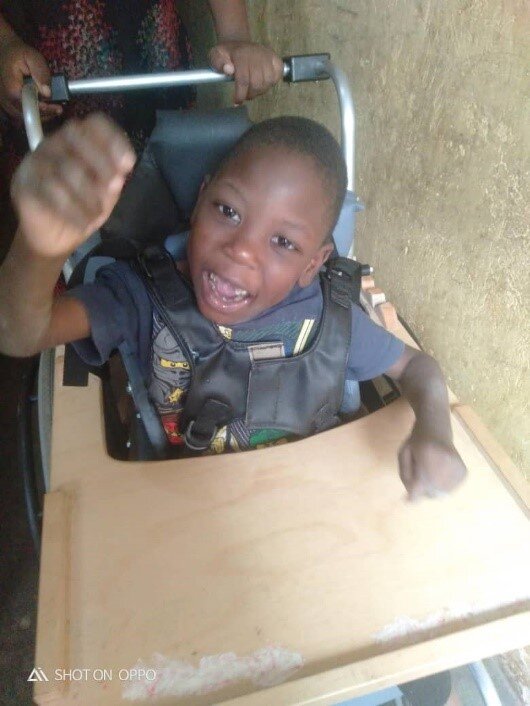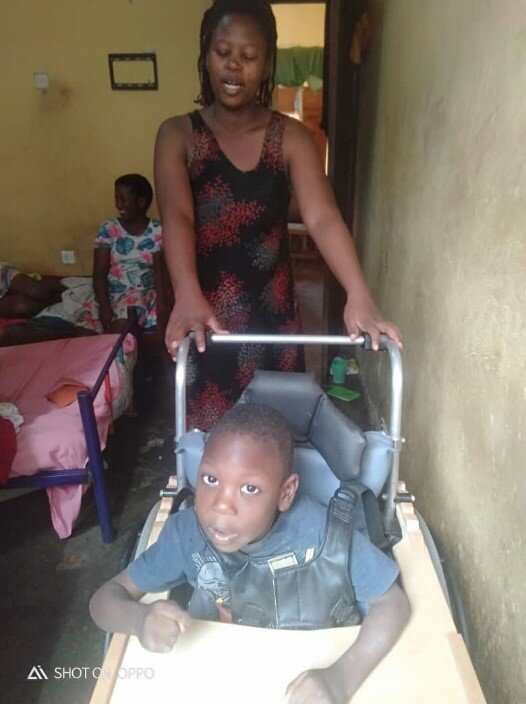Project Report
| Feb 19, 2023
Cerebral palsy quarterly report
![Our program client receiving a wheelchair.]()
Our program client receiving a wheelchair.
Thank you, our donors, for the continuous support in the Rehabilitation of 300 children with cerebral.
Here at CFU in the last quarter, we have continued to train the caregivers/mothers of children with cerebral palsy in the first two modules of the UBUNTU program getting started and knowing your child.
In these modules, the mothers have been trained on understanding what cerebral palsy is, how it is caused, and how the brain affects movements and posture. The outcomes of these modules included the following
- Understanding how children develop and being able to explain this to someone else.
- Observe your child and show where he is on the development chart.
- Identify what your child may learn next.
- Recognize fits and know what actions to take.
- How to care for a child with cerebral palsy.
- Recognize and understand the conditions and challenges for children and families associated with developmental disabilities.
In these modules, it was emphasized that cerebral palsy and other developmental disorders are not caused by witchcraft.
Before the training of these modules, some of the mothers thought that their children were bewitched and the stigma they used to get from the community where they stay.
KEY FINDINGS
- caregivers reported having good knowledge and confidence in caring for their child with cerebral palsy after, compared to before the training program.
- Attitudes towards their children improved as an understanding of the condition increased; this often resulted in greater acceptance of the child and more patience in caregiving.
- The self-esteem and dignity of caregivers increased as they felt that their children and themselves were valued. The understanding that ‘they were not on their own’ was key to affecting this change in the group setting. They reported being emotionally happier about their child and with themselves, in some cases with the recognition that the child was ‘human’ and not a ‘spirit child
- Caregivers reported a wide variety of positive changes in caregiving. The changes in caregiving practice varied across families, reflecting the wide diversity of needs in children with cerebral palsy. Simple changes in changes positioning, and understanding how to communicate with their child were two common themes frequently commented on by caregivers
- Additionally, increased patience in caring for their child because of an improved understanding of their condition was a frequently reported outcome; as one parent explained she no longer ‘beats the child’ while feeding him. This extremely important shift in caregiving practice was also emphasized by facilitators in the monitoring data and Most Significant Change stories. There were some reported improvements in family attitudes towards the child. However, this change was often small, and sharing of knowledge and skills with other family members was sometimes limited.
- Many caregivers were socially excluded within their families and within the community. Fathers were absent in half of the families and even when present there was limited involvement in caregiving.
- Stigma towards, discrimination, and exclusion towards children with cerebral palsy and their caregivers was a significant issue. Some caregivers reported some improvements through the training program.
- The ability to combine working and economic activities with full-time caregiving was a major challenge for most caregivers, especially when children are not in school, and childcare is unavailable.
ASSISTIVE DEVICES
5 of our children who are enrolled in the program in collaboration with the Mukisa foundation got wheelchairs and standing frames.
‘’Like one caregiver reported that she was able to take his child outside after getting the wheelchair and the child was so happy.’’
In the attached picture it's baby Favor and the mother in the wheelchair which was given to them.
![Mother and Baby going outside]()
Mother and Baby going outside
![Share on Twitter]()
![Share on Facebook]()

